Overview of artillery. Weapon systems, ammunition, target detection and positioning devices
Today, artillery is a complex complex system. Indeed, the process of delivering the desired warhead to the target at the right time and synchronizing the fire with all the other elements present on the battlefield involves more than just firing a cannon. It starts with logistic and technical support, effective systems and methods of observation and target designation, then enters the system of command, control and communication, capable of coordinating firing in a complex space that the ammunition flies before it reaches its goal and, finally, ends with effective , reliable and accurate weapons systems.
At the same time, it is impossible to include all of the above elements in one review without turning it into something akin to a thick multi-volume encyclopedia. Not to mention the fact that logistical support is an integral part of the military-industrial system, and detection and target designation is entrusted to platforms that are mostly equipped with sensors that allow them to pinpoint the target and transmit coordinates up the command chain, not to mention O drones, aviation and companions!
Thus, in this series of articles we will limit ourselves to hand-held binoculars for capturing targets and laser pointers (only a small part), although special radars for artillery also deserve attention.
The chain of command and control for the most part consists of many complex systems that are closely interconnected, so we will give here only a general description of what is needed today to perform a firing task in a combined-arms battle.
On the other hand, weapons systems and their ammunition form the basis of this series of articles. These include self-propelled guns and howitzers (wheeled and tracked), towed guns and howitzers, self-propelled heavy mortars, as well as towed rifled mortars. The latter are now often referred to as artillery, but as alternative systems. And, finally, rocket systems close the line.
More range and accuracy
What the army always demanded from its artillery was the long range and increased accuracy. But today, these two important elements that allow fire from closed positions to retain their value should become an integral part of scenarios where the minimization of indirect losses is paramount and where the full area of responsibility is not always clearly defined. The time to strike a target is another problem and, since highly mobile targets have become the norm, the cycle of sensor arrows needs to be shortened as much as possible. In other words, the entire chain, starting from the detection of a target and ending with the final impact of a projectile or warhead on it, has decreased.
Although some armies, such as the western ones, have completed the reduction of their artillery arsenals and now they have significantly fewer systems on their balance sheets than they did during the Cold War era, other armies intend to make huge investments in this area. The main potential customer for the manufacturers of artillery systems in the coming years will certainly be India. It should be noted that this country will finally be able to complete its long-awaited procurement process. In November 2014, after many years of requests for proposals and cancellations, the Indian Ministry of Defense approved the purchase of one of the components of the Artillery Modernization Plan (the plan was drawn up as early as 1999). It includes 100 self-propelled tracked howitzers, 180 self-propelled wheeled howitzers (with an option for another 120), 814 mounted on the truck chassis of guns, 1580 towed howitzers and 145 light guns 155 mm. The 155 / 52 guns mounted on the truck chassis were the first category for which the entire procurement process was determined. Since national production is mandatory, numerous foreign bidders have entered into transactions with local companies as part of their applications.
However, India is not the only country that seeks to invest in indirect firing systems. Poland looks at self-propelled and mounted howitzers, new rocket launcher systems (MLRS) and even heavy self-propelled mortars. Asia and Latin America are also in the field of view of artillery system sellers. Well, let alone God himself ordered Russia to rearm.
In addition to new systems on the market, one should not forget that as a result of the aforementioned reduction of the Western armies, a significant amount of weapons, including quite modern products, fall into the list of “used” systems. In addition, as already mentioned at the beginning, the science of artillery is not only the length of the barrels of its guns. No doubt, new ammunition, new target designation systems and completely updated rules and sequence of actions will play their important role. So let's start our review.
Part of 1. Hell on caterpillars
Tracked self-propelled howitzers (SG) remain the main artillery component of heavy units and, despite the fact that their overall value has decreased in many armies, including those of the first echelon, which widely use their expeditionary forces, only a few countries decided to get rid of them. The protection that these howitzers offer their crews is also unmatched.
Italian SG PzH 2000. Many countries, including Italy, currently have limited needs for such howitzers and, as a result, some of them are now available on the market for surplus military equipment.
In the United States, replacing the M109 howitzer has been a top priority in many ground vehicle programs that were canceled in previous years. At the AUSA 2014 Symposium, Colonel Combat Armored Vehicles Project Manager at the Office of Army Programs, James Schirmer reiterated the importance of armored systems designed for direct-fire firing. In May, the 2014 of the year began production of the installation batch of howitzers M109A7, formerly known as M109A6 PIM (Paladin Integrated Management). The heavy armored brigades of the American Army will continue to rely on a system that has undergone many upgrades. Howitzer production began in the 1962 year, although few of its original components have reached newer versions. The new artillery system also includes the modernization of the M992A2 ammunition hauling vehicle, which in the updated version is known as M992A3 CAT (Carrier Ammunition Tracked - tracked ammunition transporter).
Compared to the original M109 howitzer, the A6 variant, also known as the Paladin, included many improvements (larger tower, M284 155-mm / 39 gun with semi-automatic loader, automatic fire control system with integrated navigation and inertial positioning system, etc.) d.) At some of the Paladin IG, upgrade kits were also installed to fire the M982 Excalibur projectile. The M109A6 deployment began in the 1994 year, and the last production system left the factory walls in the 1999 year.
In the M109A7 version, we will find numerous components of the chassis and power unit taken from the Bradley combat vehicle, some components borrowed from the “deceased” NLOS Cannon cannon, as well as new components. These include the new chassis with a maximum combat weight of 45 tons, which, very importantly, has increased the level of protection, since it has increased ground clearance and the ability to install a mine control kit, along with additional armor. The machine has been installed a common modular power system, which includes a starter-generator 70 kW with bi-directional conversion 600-28 Volts. The new power system was needed because instead of hydraulics, three electrical subsystems were installed, taken from NLOS Cannon, namely, an electrical rammer, a horizontal guidance drive and a vertical guidance drive, all powered by 600 Volt. In addition, the new power system also significantly increased the modernization potential for new energy-intensive subsystems. From the Bradley BMP were taken engine power 675 hp, transmission HMPT 800-3ECB, final drives and power take-off, but added a new cooling system. Also, brad rollers, shock absorbers, torsion shafts and tracks 485 mm wide were taken from Bradley, but new rotary dampers were added. Most of the driver's layout solutions are also taken from Bradley, some elements have already been integrated into Paladin IG, with the exception of the so-called driver’s technical vision amplifier. Most of the electronics remained untouched, but a “friend-foe” type tracking system was added.
As far as performance is concerned, the maximum range has not changed, since the gun remains the same (M109A7 can shoot standard ammunition at 24 km, active-projectile projectiles at 30 km and an Excalibur projectile from Raytheon at 40 km). The rate of fire also has not changed; the A7 variant is equipped with an advanced semi-automatic howler from the NLOS-C / Crusader howitzer, but does not have an automatic loader system. After a one-year contract obtained in October 2013 of the year, in accordance with which production of the installation batches M109A7 and M992A3 began, BAE Systems received the following contract for the continuation of the initial production in November 2014. This is the first of three one-year contracts for the production of additional 18 kits. These contracts also provide for the production of spare parts. The company BAE Systems cooperates under these contracts with the military plant in Anniston, the final assembly is carried out at the plant of this company in the city of Elgin. Deliveries of the first systems were carried out in the middle of the year 2015. It is planned with the proper budget financing to make 450 machines. After additional testing of the first batch machines, the first unit should receive the machines in February 2017 of the year. In 2016, final testing of the howitzer itself and the ammunition replenishment machine will take place, after which in January 2017, the US Army will decide on full-scale production.
BAE Systems does not exclude the appearance of the first export order; M109 users around the world only operate models up to the M109A5 standard, which is distinguished by its smaller tower. But since upgrading to the A7 standard is not possible, a completely new system is proposed. You still need to look at the demand for the variant, considering that the M109A7 has a 39 caliber trunk retained against an 52 caliber offered as an option, albeit at a higher price. Perhaps a request for a howitzer with a barrel caliber 52 each time will be considered individually, because here everything will depend on the compliance of contracts with the law on the sale weapons and military equipment to foreign countries.
Globally available set of solutions for M109 modernization. There are several reasons for this. For example, a smaller tower does not allow the use of some new ammunition. Therefore, the Italian army is ready to simply scrap its M109 howitzers, because it is impossible to install the kit necessary for the new Vulcano ammunition in them. Italy has already transferred ten of its M109L SGs in 2013 to Djibouti. A number of used M109 vehicles may also become available due to programs for further downsizing of the armed forces, mainly in Europe. Take Austria as an example, it announced the reduction of its M109A5 fleet from 136 to 106 machines, while Denmark is also looking for a replacement for its M109A3. On the other hand, Brazil seems to be interested in upgrading part of its howitzers M109A3 and acquiring surplus M109A5 under the program of selling military property to foreign countries. In early December, 2014 of Chile received 12 machines M109A5 from the surplus of the American army as part of this military assistance program. In the middle of 2000, Chile received an 24 howitzer M109A3, and in 2013, another 12 with a M284 cannon of 39 caliber and a gun carriage M182.
The US Army has adopted the M109A6 Paladin SG in the middle of the 90. Due to the fact that numerous attempts to replace it with new tracked howitzers have failed, it will remain the basis of Artillery US Army for a few more years
This howitzer for some time had the designation M109A6 PIM, and is now known as M109A7. She borrowed a lot of elements from the Bradley BMP, and some components from the closed NLOS-C Crusader program. The first machines were to be delivered in the middle of the year 2015
The KMW PanzerHaubitze 2000 with the Rheinmetall 155 / 52 cannon is definitely the most advanced self-propelled howitzer on the market
Simply put, this Howitzer Artillery Cun Systems is actually a lightweight version PzH2000. It costs the same gun, but it has reservations lightweight
Old Europe can argue with America about who has a better weapons system. For example, no need to go far. SG PzH 2000 was developed and manufactured by Krauss Maffei Wegmann with the participation of Rheinmetall Defense, who offered her an artillery unit. This is a much more modern and efficient system, equipped with an 52 caliber cannon, which significantly improves the range. All this, coupled with excellent crew protection, allowed the Netherlands and Germany to successfully deploy the PzH 2000 in the Afghan theater. It is also in service with Greece and Italy; also manufactured under license by Oto Melara. In total, about 400 PzH 2000 howitzers were manufactured. They could have been more, but for the Netherlands and Germany, initially the number was reduced due to the reduction of the armed forces of these countries.
The automatic charging system of a howitzer with electric drives and digital control allows you to get the rate of fire from 8 to 10 projectiles per minute in MRSI mode (simultaneous impact of several projectiles; the angle of inclination of the barrel changes and all projectiles fired at a certain time). Given the significant number of on-board shots (up to 60), it surpasses the rest of the barrel artillery systems regarding firepower. As for the range, the PzH 2000 howitzer shoots a standard ammunition at 30 km and a projectile with a bottom gas generator for more than 40 km. This allowed the howitzers in Afghanistan to "cover" huge areas.
Two operators of this howitzer, Italy and Germany, have teamed up to develop a new Vulcano extended-range ammunition. They system PzH 2000 will soon be able to shoot at long ranges with very high accuracy. Italian Oto Melara is developing a kit that will allow adapting the loading system to new shots, which requires improvement of the loading tray and the bottom in the back of the tower, as well as the exclusion of the fuse installer. The work must be completed before the end of the year 2015.
Like M109, the PzH 2000 howitzer is also available as surplus property stored in the warehouses of the operator countries. Germany ordered 450 howitzers, but only 260 of them adopted. Italy staffed two of the three planned regiments, each for 18 systems; therefore, around 20, the PzH 2000 machines are mothballed and should be sold as soon as the reorganization plan of the Italian army is finally approved. The Netherlands ordered 57 howitzers, but only 39 was deployed, as a result of 18 extra machines. Croatia became the last member of the PzH 2000 club, signing a deal with Germany on 12 systems in two installments, with deliveries in 2015 and 2016 respectively. Denmark also considers a KMW howitzer as a possible replacement for its M109, having a need from 15 to 30 pieces.
Dimensions PanzerHaubitze 2000
With a mass of 55 tons in combat configuration and 49 tons in the PZH 2000 transport howitzer, the system is not so easy to deploy, especially with regard to airborne transport. For this reason, KMW has developed a new system, the Artillery Gun Module (AGM), which uses the same artillery part, but now in the transport configuration its weight is only 12 tons. Most of the mass was saved as a result of lower booking levels, since the AGM is remotely controlled. It has a fully automatic charge portioning station and a charge loading system, which is complemented by an automatic ammunition loading system - a variant of the loading system installed on the PzH 2000. A gun can fire three shots in 15 seconds or six shots in less than a minute. Standard ammunition is 30 shots. Having a digital fire control system (FCS) and an integrated combination navigation INS / GPS system, howitzer can fire in MRSI mode. The AGM project was postponed for some time, but reanimated at Eurosatory 2014. There the system was shown on the chassis of armored personnel carrier Boxer. Her shooting tests were conducted in the autumn of 2014. Also this howitzer can be mounted on a tracked chassis. Such a decision on the basis of the chassis under the designation Ascod Donar company KMW offers in conjunction with the General Dynamics European Land Systems. The empty weight of the entire system 31,5 ton fits into transport aircraft capacity A400M Atlas.
Another fully autonomous artillery tower is expected to appear in Israel. Following the acquisition of the company Soltam company Elbit Systems seriously we have invested in new lines of business, adding new features due to the Israeli electronics and to improve some of the existing systems. She is also working on new systems, mainly based on existing standard modules. One of them is to meet the needs of the Israeli army in a fully autonomous artillery tower, designed to be mounted on wheeled and tracked chassis. Elbit Systems has already developed a barrel, a kickback system, a loading system, an SLA and electric drives. Now the task of developers - to develop a prototype, which, as stated by representatives of the company Elbit at Eurosatory 2014 exhibition is "very advanced" stage; it is planned to test it by the end of 2015.
At the end of the 1990-x, the British army decided to increase the range of their "vintage" howitzers AS90 80-s of release and began developing a version with an 52 caliber barrel, named Braveheart. It contains an automatic electric-powered loader, which allows you to shoot three projectiles in less than 10 seconds or six projectiles per minute for three minutes (a long fire rate of two shots per minute). Work in the mode of the muffled engine is carried out at the expense of the auxiliary power generator, significantly reducing fuel consumption and thermal signature. The upgrade also includes the installation of Linaps (Laser Inertial Artillery Pointing System) laser inertial guidance system from Selex ES, which provides the arrow with accurate vertical and horizontal corners of the barrel along with the position of the system. Welded steel tower provides the fourth level of protection in accordance with NATO STANAG 4569 standard. The Braveheart's range is typical for systems with an 52 barrel of a caliber, that is, 30 km for standard projectiles, 40 km for projectiles with a bottom gas generator, and more than 50 km for active jet projectiles. Not all AS90 howitzers of the British Army have been upgraded; due to a reduction in the number of aircraft in the middle of 2000, only 96 systems were upgraded from the original 179. In addition, further reductions are not excluded, with the result that the howitzers will remain slightly more than 60 pieces.
AS90 howitzer never received export orders. However, in 1999 a licensing agreement was signed with Poland for the production of AS90 towers by Huta Stalowa Wola, armed with a 155/52 gun. The tower was supposed to be mounted on a Polish-made chassis - a modification of the Kalina tracked demining vehicle with components tank PT-91 developed by Bumar-Labedy. However, the supply of 24 such howitzers under the designation Krab was stopped by 2015 due to structural defects in the chassis. Interestingly, the first eight trunks were delivered by the French company Nexter, and the next 18 were made by the German Rheinmetall. The Krab SG has 40 rounds, 29 in the hull and 11 in the chassis.
In December 2014 year contract was signed for the production and revision to the requirements of the customer chassis K9 South Korean company Samsung Techwin. The first batch of 24 chassis will be delivered in 2017 year from South Korea in order to close the needs of the First Division of the Polish army. Installation of the tower on the car is in Poland. The remaining 96 chassis will be manufactured at the factory in Polish Gliwice, and by the year of 2022 five artillery divisions will receive new Krab vehicles.
Donar is based on the Ascod 2 chassis and the Artillery Gun Module artillery module (some components are from the PzH 2000) developed by KMW; Artillery Gun Module may also be mounted on wheeled platforms
In the figure, the model of the South Korean howitzer K9 Thunder, which itself was not exported, but is the base for the Turkish SG Firtina, while its chassis is adopted for the new Polish howitzer Krab
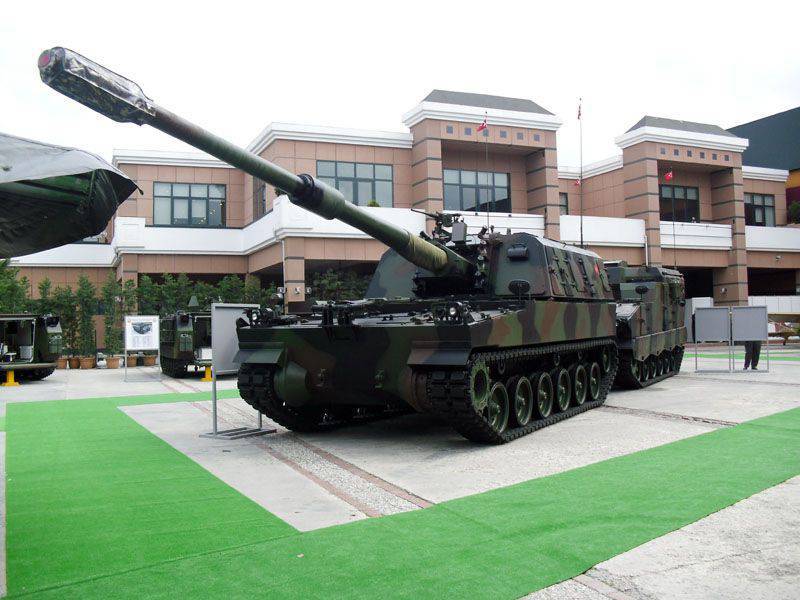
Although the Firtina howitzer is made by the Turkish company MKEK, it is a modification of the K9 SG, produced by the South Korean Samsung Techwin
South Korea has gained quite a lot of licensed production experience over the M1000A109 2 howitzers, known there as K55. In the middle of the 90's, they were upgraded to the K55A1 standard, as well as the associated K56 ammunition replenishment machine. At the start of the 90, South Korea developed a new 155-mm / 52 artillery system, which they began to deliver in the 1999 year. The K9 Thunder howitzer company was built by the K10 automatic ammunition replenishment machine on the same chassis. K9 machine equipped with an automatic processing system and chambering rounds, automatic guns and automatic guidance system OMS with inertial navigation system. This allows you to quickly open fire, as well as have a high rate of fire, three shots per 15 seconds in standard mode or in MRSI mode. The usual rate of fire is six shots per minute, the continuous rate of fire is two shots per minute. There is no exact production data, although the South Korean press claims that the K850 howitzer 9 was supplied to the army from the demand for 1200 machines in question.
The first foreign buyer of the K9 / K10 tandem was Turkey, where it is known as TUSpH Firtina or T-155 K / M Obus. Turkish version of the state-owned company manufactures Makina ve Kimya Endiistrisi Kurumu (MKEK). It differs significantly from the original system, especially in the turret and electronic components, the Aselsan MSA is installed in the T-155. Basic needs of Turkey were 350 howitzers, but it is not clear whether they were made or production has stopped at about 180 pieces. MKEK also manufactured 70 ammunition replenishment machines. This machine was developed by Aselsan, it overloads 48 projectiles and 48 charges to them in 20 minutes from its onboard set of 96 shots.
Turkey managed to sign an export contract for Firtina's 36 systems with Azerbaijan in 2011, but had to decide with Germany the issue of lifting the embargo from the MTU engine. The alternative power unit meant partial refinement of the engine compartment and the corresponding delays in deliveries that were supposed to begin in the 2014 year.
The Singapore Army had problems with the mobility of its M109 howitzer and therefore wanted to get an easy self-propelled system. In the middle of 90, Singapore Technologies Kinetics (STK) was assigned to develop a Primus machine with a mass of 30 tons and a width of less than three meters. In order to accelerate development and reduce the cost, STK took the Universal Combat Vehicle Platform developed by United Defense (now BAE Systems), which has aluminum armor, as a basis. The artillery unit was developed using the experience gained from the FH-2000, and in order to minimize the mass, an 39 caliber gun was chosen. In order to increase the rate of fire, STK developed an 22 shot shop and an automatic loading and unloading system that allows you to shoot three shots in 20 minutes and withstand a long fire rate of two shots per minute for half an hour. Thanks to the automated LMS and navigation system, the Primus howitzer can make the first shot within 60 seconds after being stopped. The first 48 SG Primus were delivered to the Singapore Army in 2002 year.
The PLZ52 howitzer is the latest development from Norinco. It is distinguished by an 52 caliber gun, and Algeria will most likely become its first foreign customer.
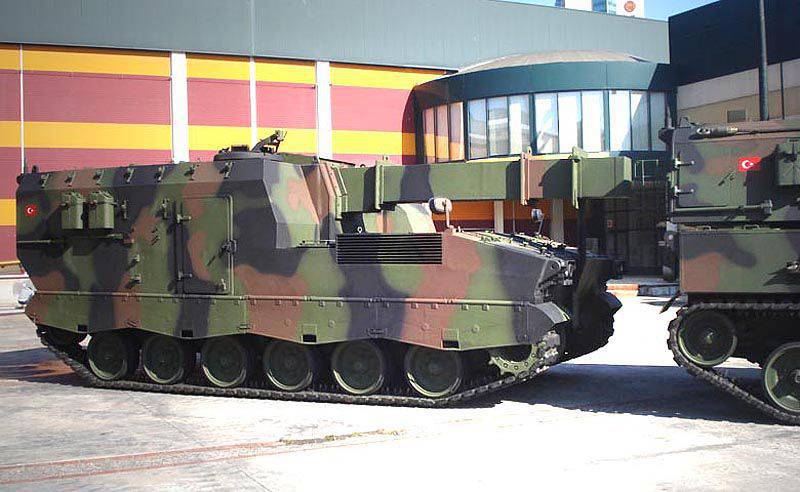
Machine ammunition replenishment Firtina - this Turkish adaptation of the South Korean K10 machines; tandem works in the same way as the M109-M992 pair (see above)
For foreign customers, Russia offers two self-propelled tracked howitzers Acacia and Msta-S, both models from the Cold War times. Russia still adheres to its 152 mm caliber and makes rather weak attempts to develop an 155 mm caliber version for export.
2С3 Acacia is armed with a X-NUMX D-22 gun and has a maximum 27 km range with traditional ammunition, which rises to 18,5 km with active missiles. Howitzer Acacia is in service with many countries, for the most part was supplied by the Soviet Union. But in the post-Soviet time, export orders from Algeria, Libya, Syria and Ethiopia were received for it, Ukraine also sold several pieces to Azerbaijan. 24-mm version was developed, but, apparently, the market is not yet offered. In terms of fire power, this howitzer is superior to other 155-mm systems, but it, however, remains in the Russian export catalog and more than 155 of such howitzers (part of them are modernized) are in service with the Russian army.
Self-propelled howitzer 2C3 "Acacia"
Self-propelled howitzer 2C19 "Msta-S"
The 2C19 Msta-S howitzer is a significantly heavier weapon and although the barrel length has never been revealed, according to some estimates it is approximately 40 caliber. The stated range of shooting is for standard high-explosive fragmentation shells 24,7 km, and for shells with bottom gas generator 30 km. The howitzer has an automatic loading system that operates at any vertical angle. When shooting from a prepared position, the conveyor allows you to fire ammunition supplied from the outside, with a rate of 6-7 shots per minute. Charges are charged semi-automatic system. As for exports, 2012 systems were supplied to Azerbaijan in 2013-18, 1999 systems in Ethiopia in 20, 2011-2013 systems in 48 systems in Venezuela. Some former Soviet republics, after the collapse of the USSR, left in their arsenals howitzers of this type. Morocco should have become the last customer of this SG, having received the first systems in 2014 year. The new version of the 2C19M2, upgraded by the new MSA and the new signature management system, entered service with the Russian army in 2013 year.
At the end of the 90-s, China switched to the 155 mm caliber, adding its arsenal of new systems to the existing 152-mm howitzers of Soviet origin. Norinco has developed a PLZ45 self-propelled howitzer armed with a 45 caliber cannon. The system has the usual layout of a tracked vehicle: the driver and power plant are located in the front, a huge turret with crew and ammunition in the rear. The PLZ45 howitzer comes with a PCZ45 ammunition replenishment machine, which carries 90 shells and 90 charges, which is three complete ammunition. 24 projectile placed in the semi-automatic loading device, the charges are loaded by hand, which allows to reach rate of five rounds per minute. The radar of the initial velocity measurement provides data from the OMS, allowing you to improve the accuracy of firing. The range varies from 24 to 39 km, depending on the ammunition used. PZL45 howitzer is in service not only to the Chinese army, but also in service with Kuwait and Saudi Arabia.
Further development of this howitzer, designated PZL52, was demonstrated in 2012 year. Very similar to the previous model, it nevertheless has a modified chassis and a new power unit in order to cope with the increased weight of 10 tons. It is obvious that trunk she now 52 caliber, long range, respectively, increased to 53 km. It left a semi-automatic loading system. The company Norinco declare the rate of 8 shots per minute, as well as the possibility of shooting in MRSI mode. It is not clear whether the PZL52 SG is worthy of the Chinese army. The photograph taken in 2014 in Algeria shows a howitzer driven by a tank trailer. It is very similar to PZL, although it is impossible to determine the length of the trunk, but, in one way or another, this may mean the first export success of this type of SG.
Japan developed the 155-mm / 52 SG in the middle of the 80-s. It was manufactured under the designation Type 99 by Mitsubishi Heavy Industries in collaboration with Japan Steel Works. The 40 ton mass system is in service with the Japanese self-defense forces. Before 2014, Japan did not export weapons, but currently the Parliament of this country voted to allow Japanese companies to offer their products for export, and in this case another potential competitor could join the fight to divide the defense pie.
Catapult II howitzer developed by the Indian Defense Research and Development Organization as a possible interim solution. It is based on the Arjun Mk1 tank chassis, which is equipped with an 130-mm M46 gun.
Indian SG Catapult II
It is difficult to say about Catapult II, that is purely a self-propelled tracked howitzer. In fact, it howitzer mounted on a tracked chassis, if the use is for the classification of wheeled systems. It was shown at the Defexpo 2014 exhibition by the Indian Defense Research and Development Organization. The system consists of the chassis of the Arjun Mk1 tank, on which the M130 46-mm gun is mounted. A similar operation was done in the past with the Vijayanta tank chassis; the resulting system received the designation Catapult. 170 of these machines were manufactured for the Indian Army. Durable roof protects the calculation of the fragments, but from the sides there is no ballistic protection. The Soviet M46 field gun has an 58,5 caliber barrel and a maximum range of 27,15 km, vertical guidance angles range from –2,5 ° to + 45 °; azimuth angles are limited to the ± 14 ° sector. In August, 2014, India decided to purchase 40 such howitzers, which is considered an interim solution, pending the publication of an application for a modern self-propelled howitzer.
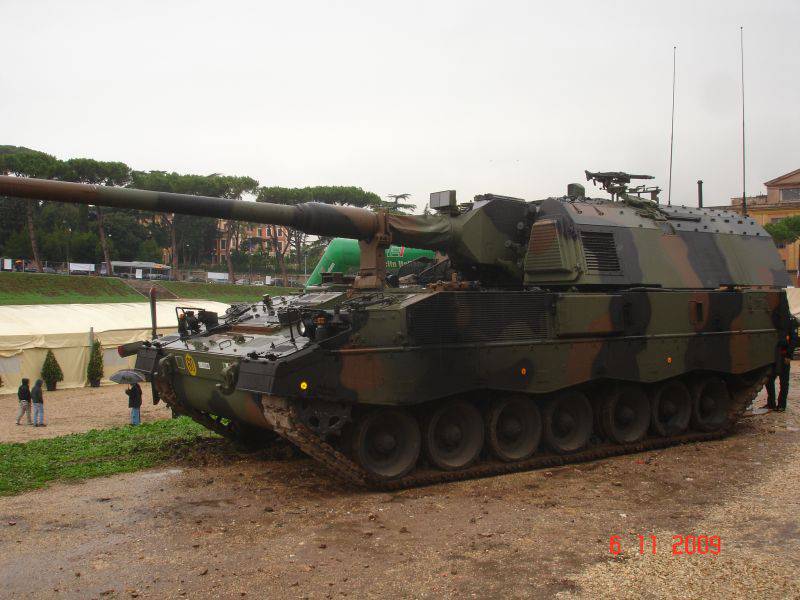
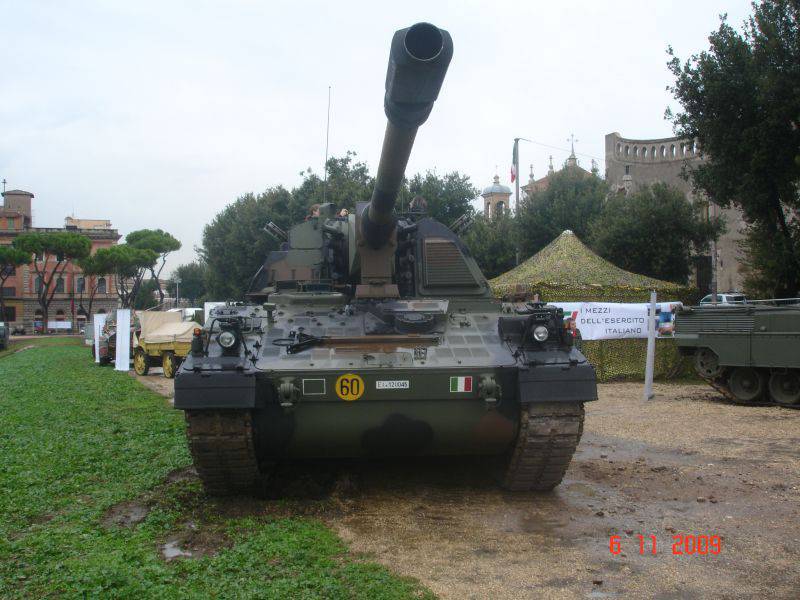
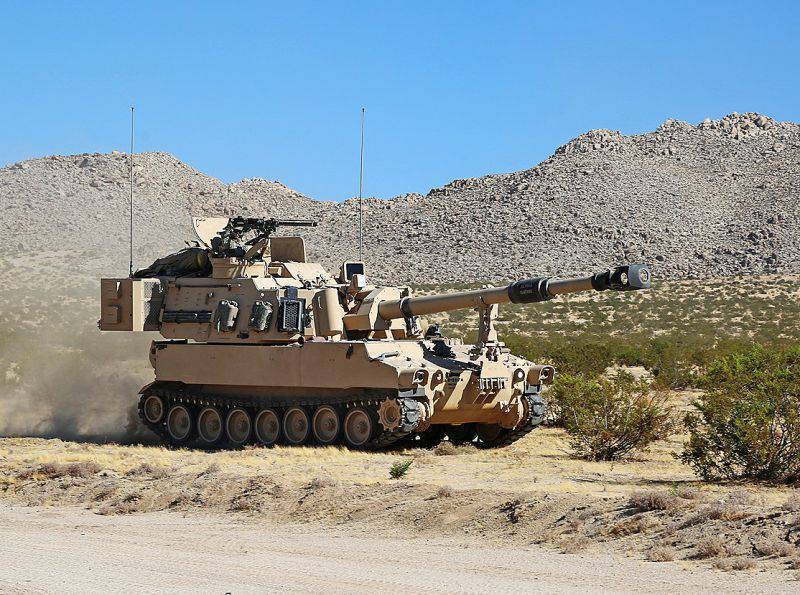
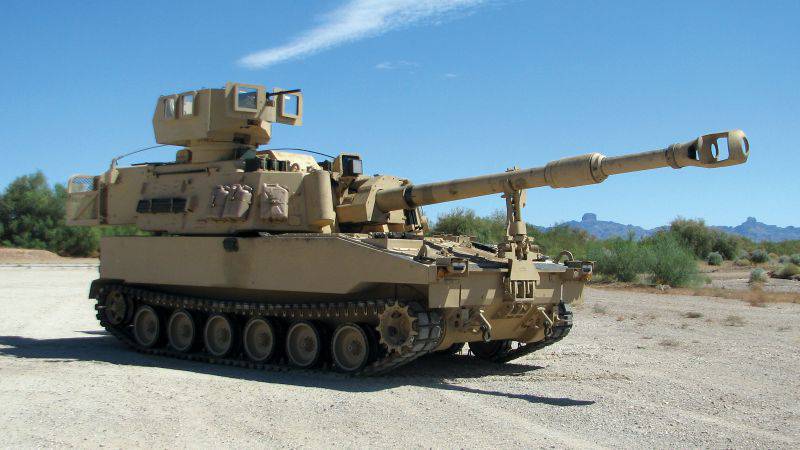
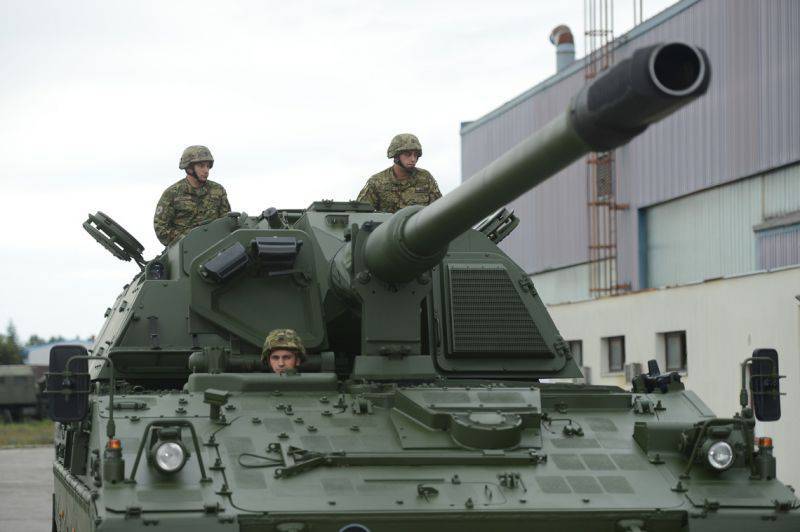
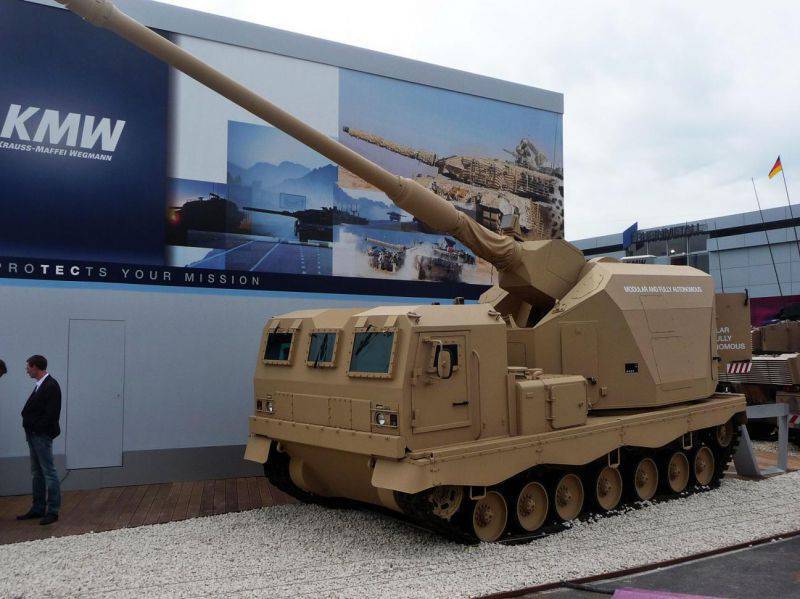
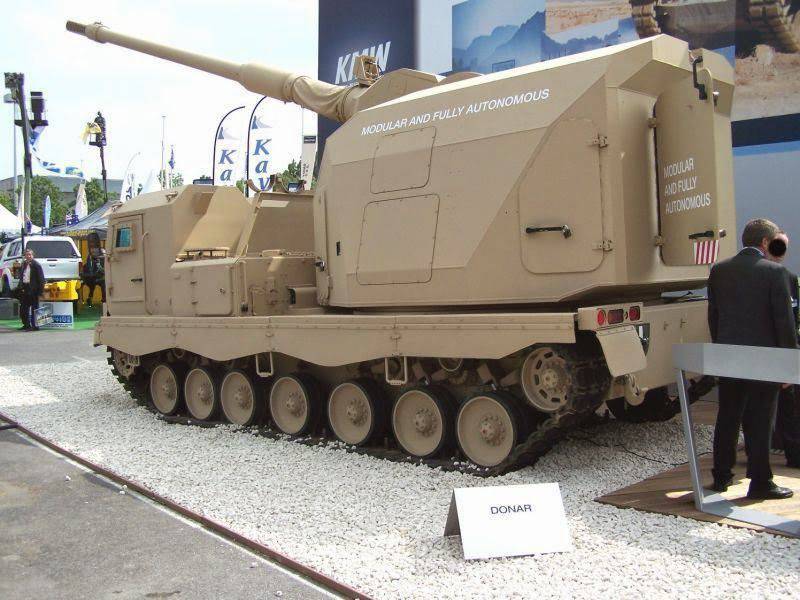
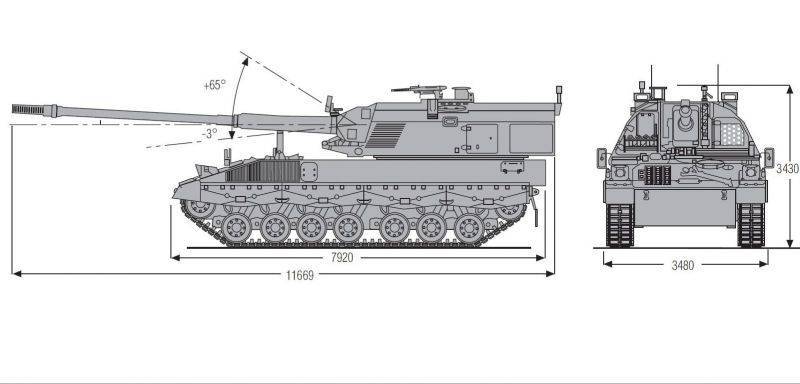
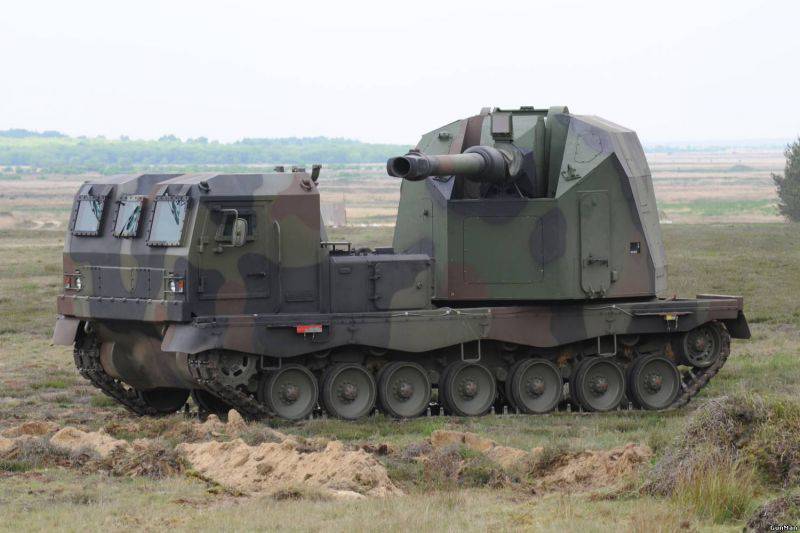
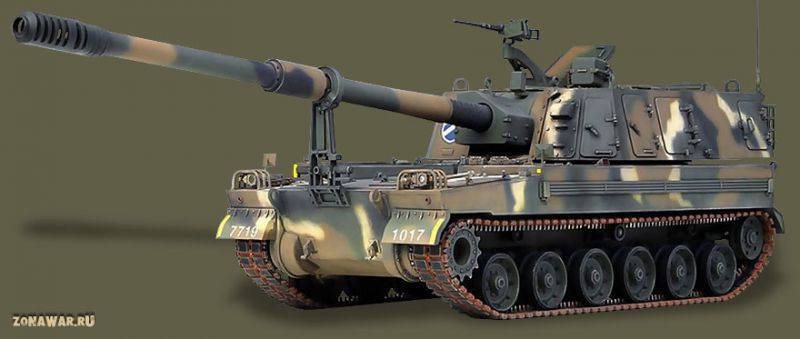
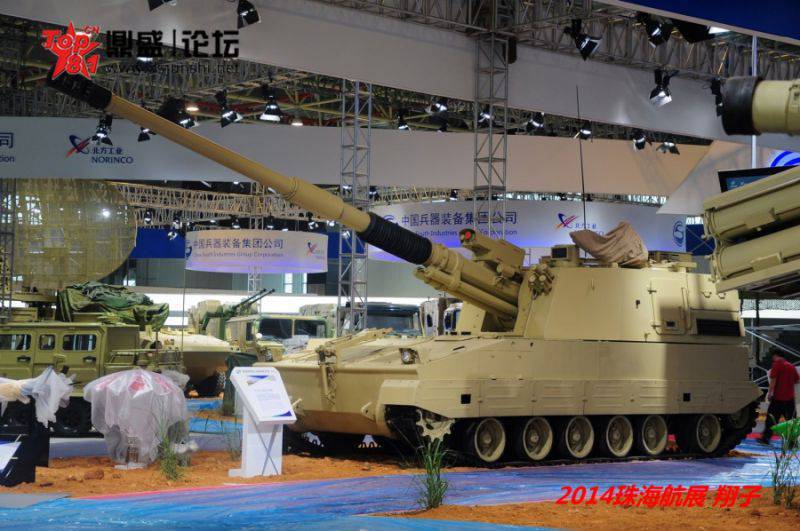
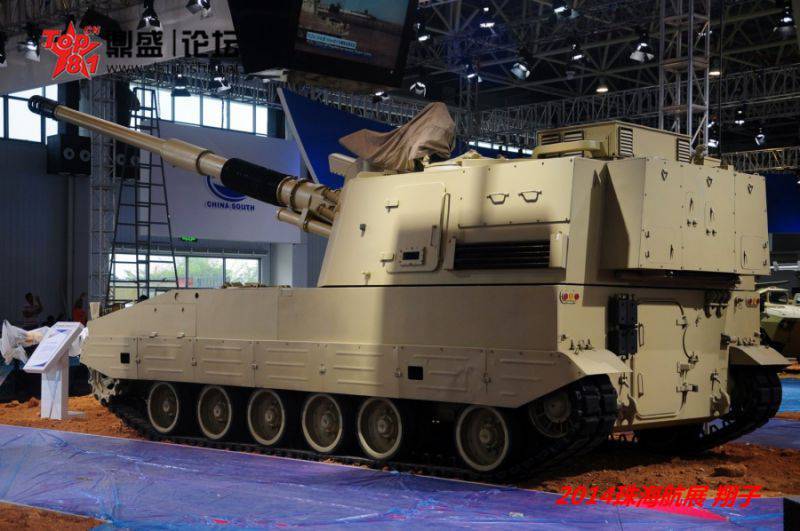
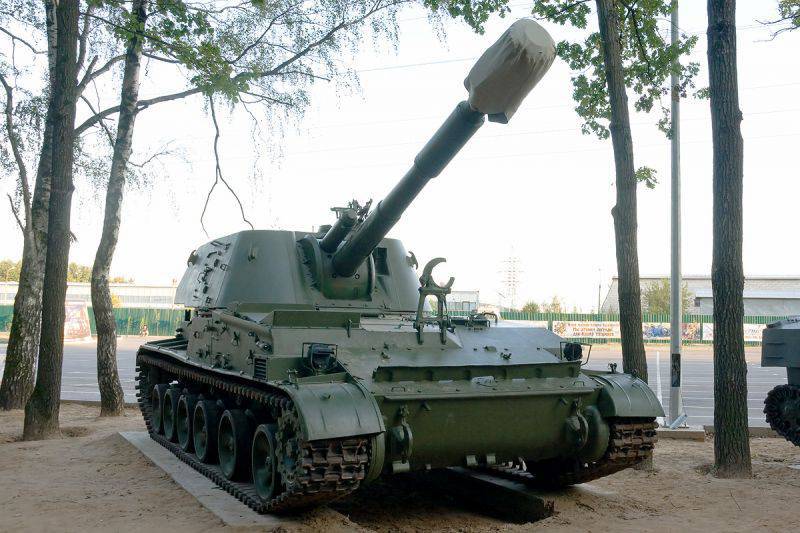
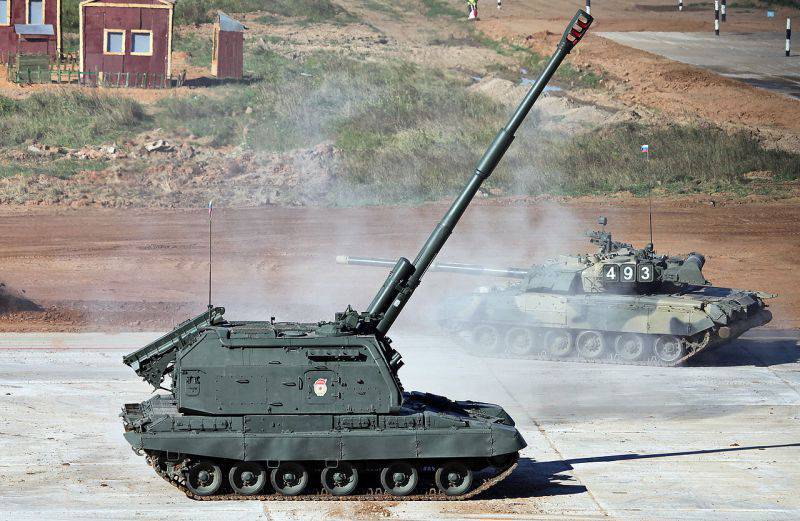
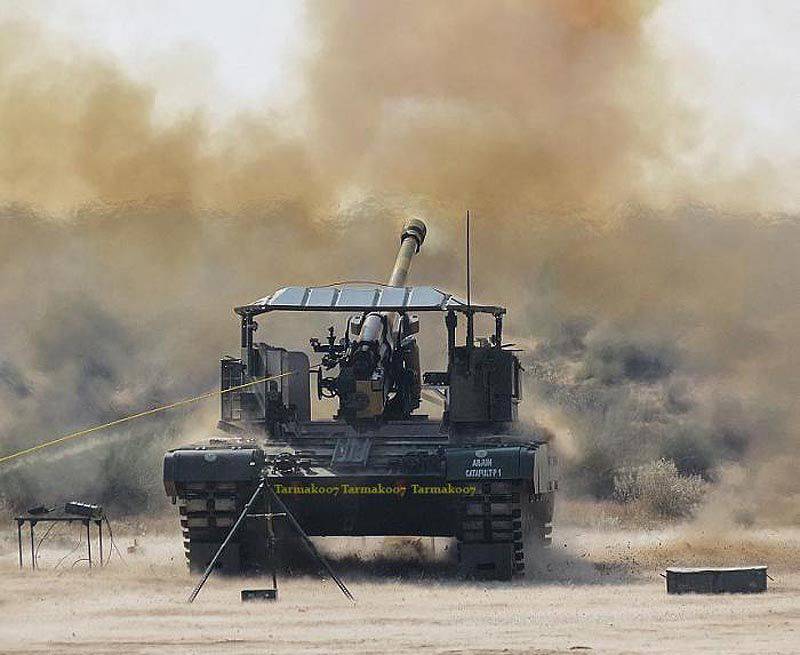
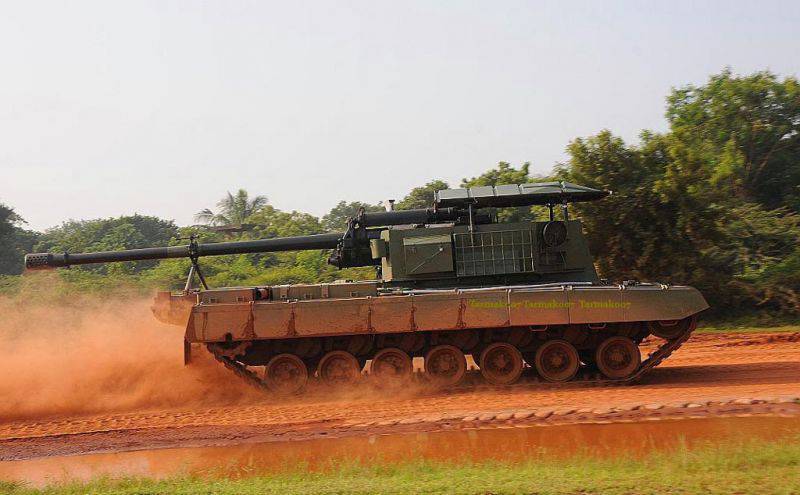
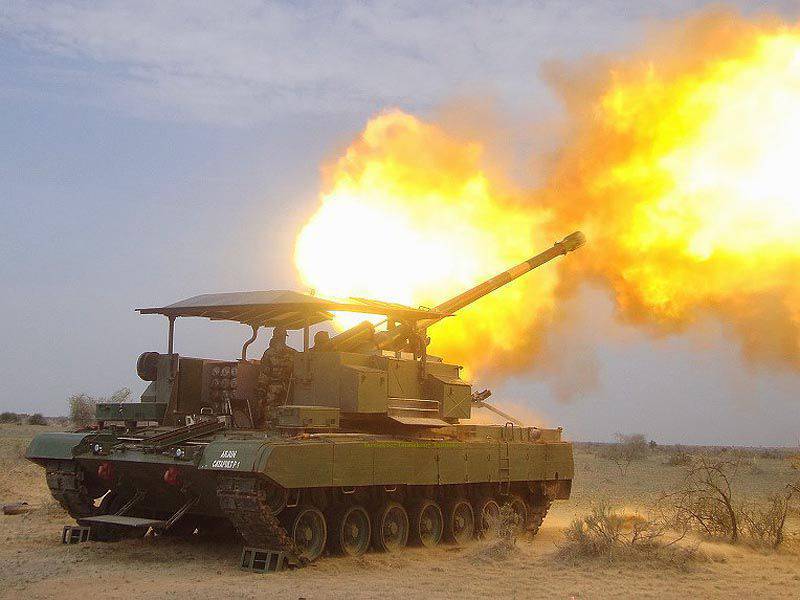
Information